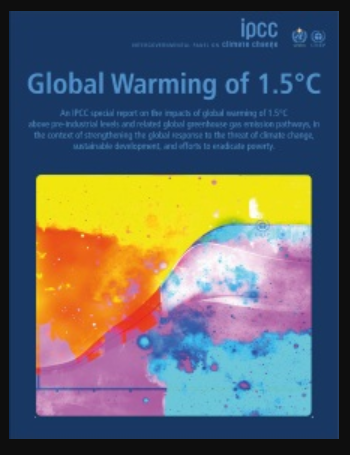The 1.5°C report from the Intergovernmental Panel on Climate Change (IPCC) puts resilience of societies and Earth’s ecosystems at the heart of climate adaptation and mitigation. It goes further than previous IPCC reports, and sets the challenge of climate change within the context of sustainable development and planetary stewardship. It calls for climate-resilient development that strengthens sustainable development and poverty eradication by transformation and ambitious change.
The report is a landmark and welcomed by the Global Resilience Partnership (GRP) and its host partner, the Stockholm Resilience Centre (SRC).
The report provides two important insights.
First, the impacts on societies and ecosystems will be significantly more severe at 2°C than 1.5°C, indicating that 2°C may no longer be considered “safe”:
- Impacts on people’s health, livelihoods, food security, water supply, human security, and economic growth are all projected to increase with global warming of 1.5°C and increase further with 2°C.
- Those living in least developed countries and small island sates will be affected the most. For example, limiting global warming to 1.5°C is expected to reduce the number of people in poverty by up to several hundred million by 2050, and to reduce the number of people globally exposed to water stress by 50%
- The world risks destabilizing ice sheets on Greenland and Antarctica. According to the report, “instabilities could be triggered around 1.5°C to 2°C of global warming”.
- Even at 1.5°C some ecosystems such as warm water corals are likely to cross tipping points and their areas shrink significantly. At 1.5°C, coral reefs are projected to decline 70–90% with larger losses (>99%) at 2°C.
- At 2°C, ecosystems on 13% of Earth’s land are projected to “undergo a transformation” from one type to another.
- Limiting global warming to 1.5°C rather than 2°C could prevent permafrost thawing over an area the size of Greenland (1.5 to 2.5 million km2)
The second insight is the estimate that there is a larger carbon budget associated with the 1.5°C target than previously assessed. That is, the world can emit more carbon for the same probability of stabilizing climate at 1.5°C. The report sets out the many long-term benefits of climate stability at 1.5°C, and how actions to meet this goal will help achieve the Sustainable Development Goals.
“The IPCC report highlights the systemic nature of the challenge. We can’t simply take action on one problem. Solving the climate problem needs a holistic and systemic approach and one which involves radical and transformative solutions,” says Deon Nel, CEO of the Global Resilience Partnership (GRP).
“We are facing a new reality. Disasters and shocks are occurring more frequently, and chronic stresses are lasting longer. Healthy ecosystems that underpin our social and economic systems are strained. We will need institutions, policies, societies and businesses that can function under more unpredictable and uncertain conditions. This means embracing ecological, social and economic diversity, to build a resilient future”.
Read the report here.
